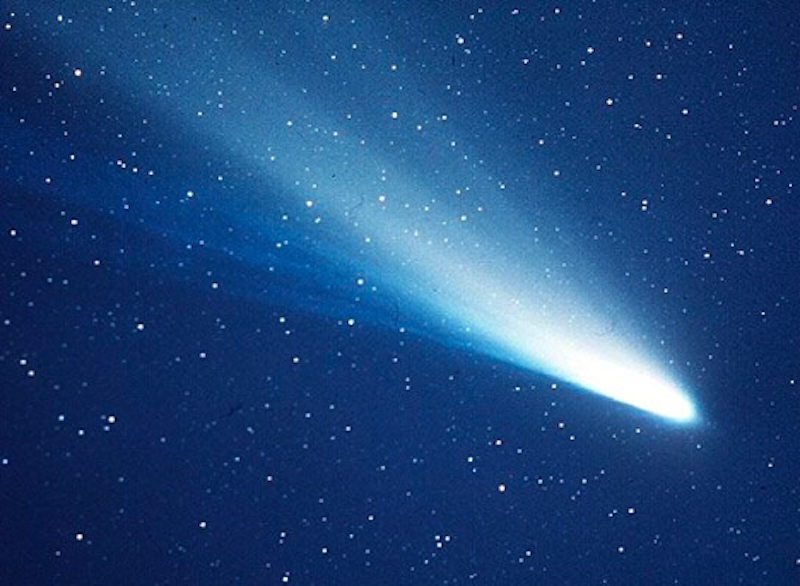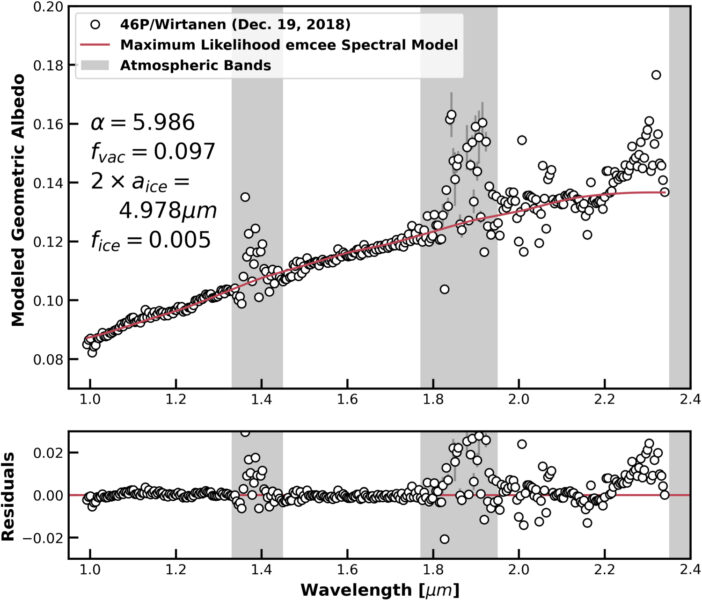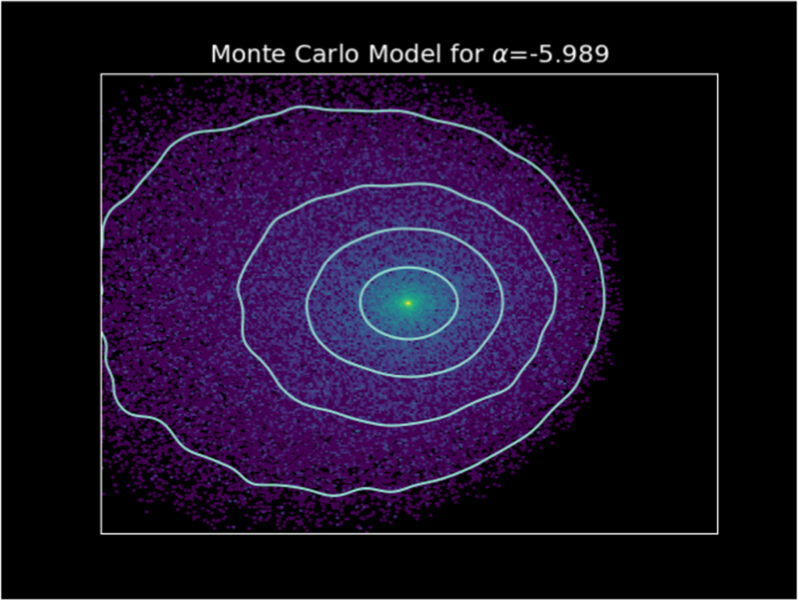10.08.2023
Where is all of the water around hyperactive comets coming from? A recent article asked if it could be “Ice, Ice, Maybe?” and concluded that it likely isn’t.

An image of Halley’s comet.
NASA Jet Propulsion Laboratory, California Institute of Technology; CC BY 4.0
Where is all of the water around hyperactive comets coming from? A recent article asked if it could be “Ice, Ice, Maybe?” and concluded that it likely isn’t.
ICY MYSTERY
Comets spend most of their time far from the Sun, where it’s too cold (too cold) for ices trapped within their cores to sublime into gas. When their travels bring them inwards, though, these frozen materials transform into a gas cloud that escapes and enshrouds the nucleus. At this point, the comet is considered “active,” and though this happens to all comets, the severity of this outgassing varies widely. Some comets only sputter, and not much of their surfaces sublimes away. Others are mysteriously “hyperactive,” meaning they (go to the extreme) and produce so much water gas that it can’t all have come just from the surface layers of the nucleus.
One hypothesis claims that this excess water comes from ice grains near the surface of the nucleus. Though data collected in situ by robotic explorers confirm that these grains exist within at least some comets, these haven’t been observed on any aggressively outgassing objects and have not been conclusively linked to overabundant water.
To address this uncertainty, Theodore Kareta (Lowell Observatory) and a team of researchers (stopped, collaborated, and) observed a strange comet named 46P/Wirtanen in late 2018. Much like an early hip-hop artist, 46P was “hyperactive” in the 1990s and has steadily calmed down since. During its 1996–1997 close approach to the Sun, it threw off enough water that 100% of its surface must have been actively outgassing. By the time 46P came (back for a brand new) apparition in 2018, however, only 58% of its surface was contributing to gas production. Kareta and the team hoped to find icy grains near the core that could explain the earlier exuberance.

Kareta et al. / Planetary Science Journal 2023
ICE-FREE
When reviewing their near-infrared reflectance spectrum, however, the team did not see the telltale absorption dips caused by water. Instead, the spectrum looked nearly featureless, with a red slope and nothing to indicate the presence of ice (vanilla or otherwise).
The team then went beyond a best-fit model and used a Markov chain Monte Carlo algorithm to put the tightest possible constraints on the amount of ice present. They found that, at most, water ice could make up <0.6% of 46P’s surface — not nearly enough to explain its previous hyperactivity.

Kareta et al. / Planetary Science Journal 2023
Now the planetary science community is left with a problem: where is all of this water coming from? In principle, JWST could say “(yo I’ll solve it)” and turn its singularly capable suite of instruments on a few outgassing comets. Luckily, with plenty of fuel left and plenty of targets to choose from, we may get an answer in the next few years.
Citation
“Ice, Ice, Maybe? Investigating 46P/Wirtanen’s Inner Coma for Icy Grains,” Theodore Kareta et al 2023 Planet. Sci. J. 4 85. doi:10.3847/PSJ/accc28
“Ice Ice Baby,” Vanilla Ice 1990, Ichiban Records.
Quelle: Sky&Telescope

